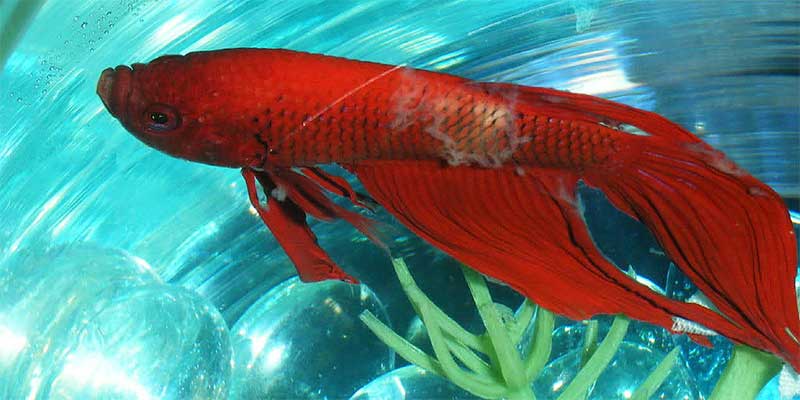As mentioned, they need warm water. A temperature of 75°C is actually the minimum; 79°C is preferable. Also, 1. 5 gal is not a lot of water. Particularly if you only change the water every two to three weeks and don’t have a filter. The water will quickly become contaminated, and leftover food may cause your nitrite levels to rise too high.
Making sure to perform a weekly water change and replacing at least 25% of the water would be a good place to start. However, do not perform a full water change! In any event, your betta will be extremely appreciative if you purchase a larger tank equipped with a heater and filter. Bettas dont like lots of current in the water though. Thus, I advise you to purchase a sponge filter that has an air pump. Some real plants also wouldnt hurt.
I have him in a 1. A five-gallon tank with aquarium gravel, a tiny artificial plant, and a little statue I replace the water every two to three weeks when it starts to look a little messy and develops this clear, foggy slime on top (don’t know what this is). I put betta safe water conditioner in the new water.
First of all, make sure you keep the water warm. Secondly, this might simply be an indication of aging. My betta fish did nothing but sit at the bottom of the tank as it grew older. It didn’t seem to be eating, but once it started doing this, it lived for an additional six years! Later that day, when you put food in, it would come up and eat it.
Your buffer increases with the amount of water per fish. Adding additional fish to a well-balanced tank is possible. The fish become ill if you add too many because the toxin levels rise. After that, you must either add more plants, reduce the amount of fish, or treat the water in another way.
Betta Disease Pictures and Synopsis
While some betta diseases have more favorable prognoses, others may not be as treatable. Check your betta daily for anything abnormal. A betta’s feedings and tank cleanings are excellent times to check for typical signs of illness.
Discover the personality of your fish as well, so you can tell when they’re acting strangely quickly.
Columnaris (Cotton Wool or Mouth Fungus)

Your betta’s water contains both harmful (Columnaris) and beneficial bacteria. Under stressful habitat conditions (e. g. crammed) and dirty water, bacteria can get into the body through cuts, the mouth, or the gills. Columnaris will have noticeable, occasionally stringy cottony patches on its mouth, gills, or fins throughout its body. Accelerated symptoms may also include visible lesions and gill damage.
Numerous conditions, such as bacterial infections, parasites, poor nutrition, and viral diseases, can result in dropsy. Additionally, keepers who feed their betta live food frequently experience it.
Dropsy is actually not a disease, but rather the symptom of what’s going on inside the betta fish’s body from other ailments. These ailments include fluid build up and the swelling of failing organs (liver and kidney). Dropsy is severe and visible from above. You’ll notice extreme swelling in the abdominal area and outward flaring scales that resemble a pine cone. This is shown in the photo above and in the full video here.
The bacteria that caused the internal problems is communicable and can infect other people in the community tank. The inclination of betta fish to remain near the surface in order to readily obtain oxygen is another sign of dropsy. Their appetite will also be virtually non-existent.
The most prevalent illness affecting betta fish is most likely fin rot or tail rot (melt). It’s frequently mistaken for bored tail biting and tears on sharp tank decor.
Upon examination, the disease will be visibly evident in the caudal tail or other fins. If left untreated, these symptoms can result in body rot and include red or black tattered, occasionally bloody, edges along the affected areas.
Conventional conduct and disposition typically do not alter unless the betta also has additional medical conditions. To respond to your second query, the answer is that they can regrow new fins!
FAQ
What do sick betta fish look like?
Do betta fish float or sink when they die?
How do I know if my betta fish is unhappy?